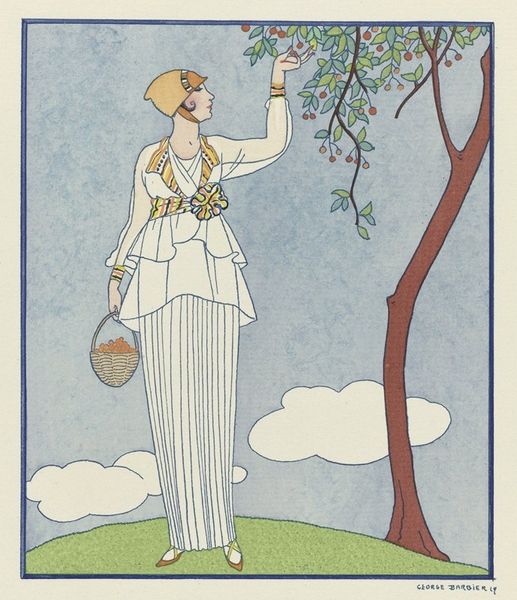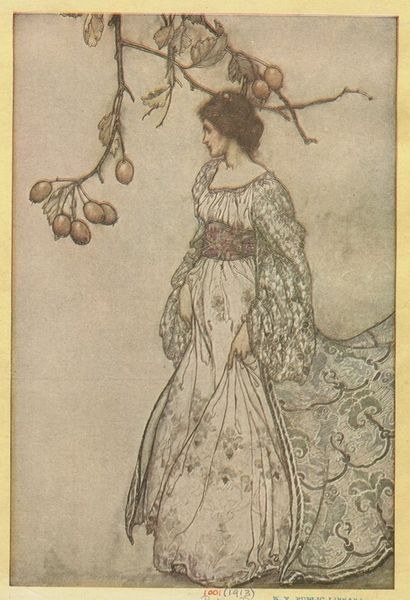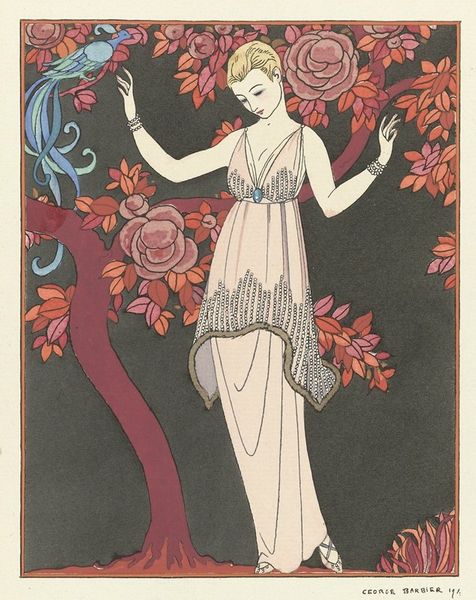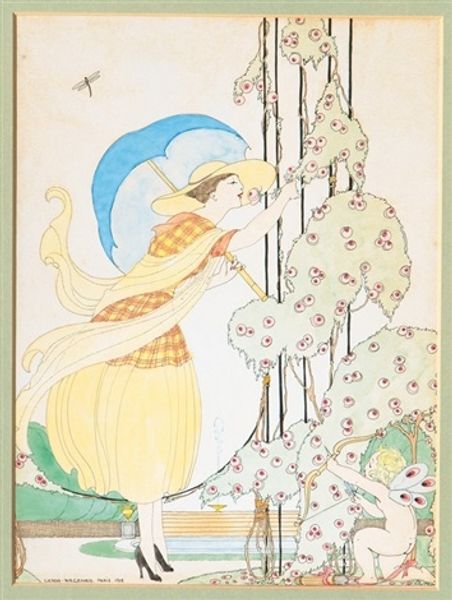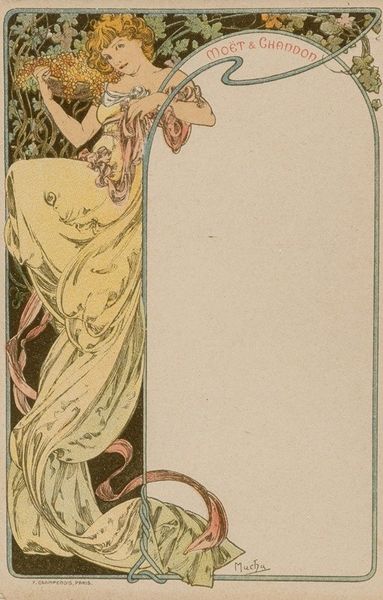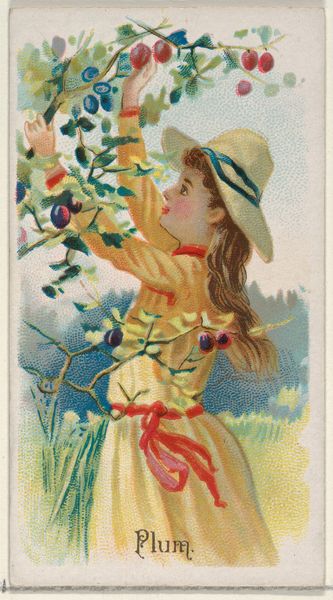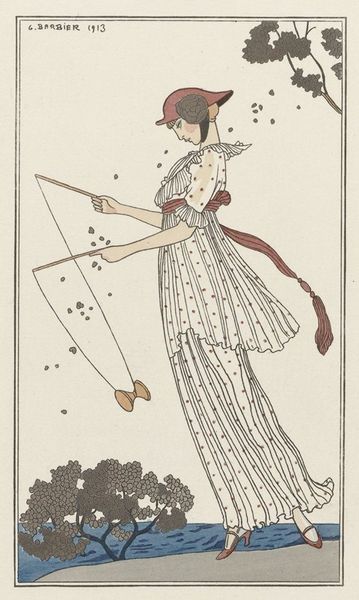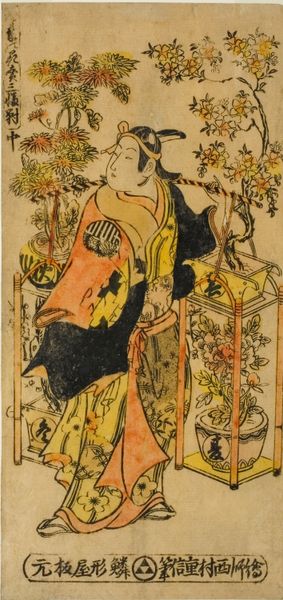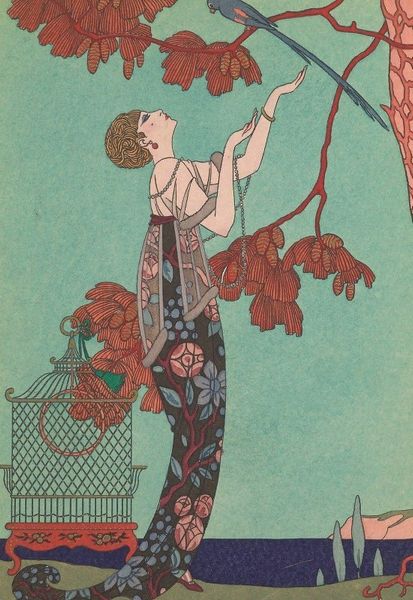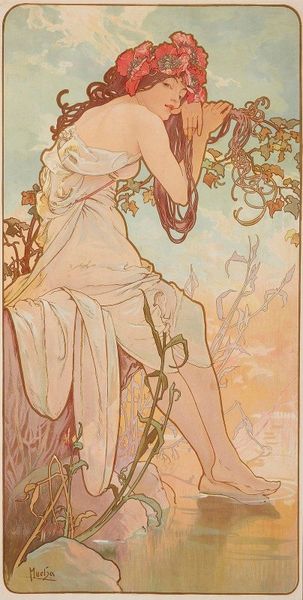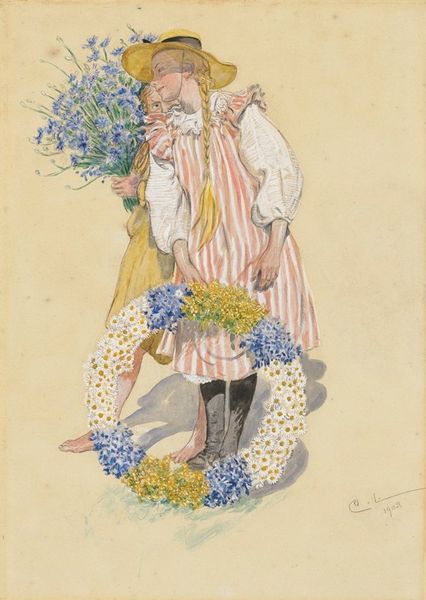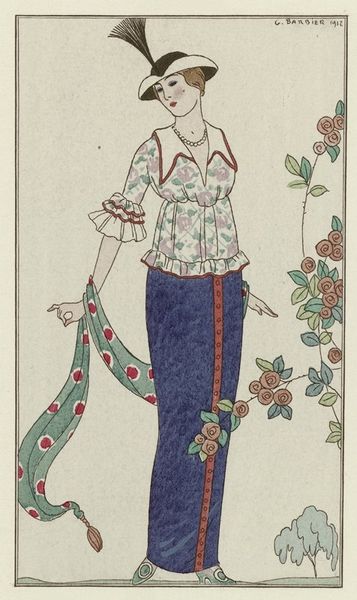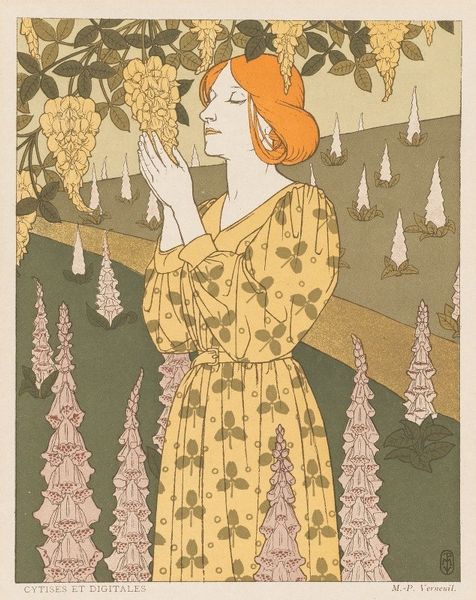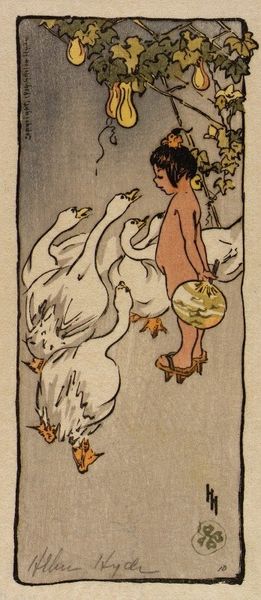
Copyright: Public Domain: Artvee
Curator: Let's turn our attention to "Toilette de taffetas," a print created by George Barbier in 1914. Editor: My immediate impression is that it’s quite lovely, a peaceful blend of figuration and decorative art. The light palette gives it an airy quality. Curator: Indeed. Barbier, a leading figure in Art Deco and fashion illustration, captures a moment of pastoral elegance here. Her ballet slippers draw our eyes down the frame, challenging historical expectations and gender norms, don’t you think? Editor: Well, if we look at the process and materiality of the piece, its creation would’ve certainly required collaboration. The availability of such prints, often commissioned for fashion journals, depended on particular means of artistic production, access to printing, affordable paper stock. Curator: That's a salient point, it's impossible to ignore the political backdrop as the image evokes an idealized view of women juxtaposed to the tumultuous landscape of pre-war Europe. The composition is inherently political. What are your thoughts on the apple motifs on the skirt? Editor: I wonder about the source of those materials and their broader economic context. Those colors—were they the product of recently industrialized dyes? What kind of labor did it involve to produce these effects, from the growing and harvesting of natural dye matter, to industrial manufacture. Curator: The use of classical motifs, especially fruit, as symbols of both femininity and fertility further complicates Barbier's representation, in the Edwardian Era when only upper-class women had leisure for elaborate self-care. Editor: Absolutely. I can’t help but look for more data, considering how much information a simple artwork holds within. From where this work was created, to when, and how – these concerns matter. Curator: Indeed, engaging with "Toilette de taffetas" prompts essential conversations about the intersection of art, politics, gender, and production, inviting us to rethink its creation and enduring legacy. Editor: In many ways, the sum of material reality that made the artwork is more engaging and important than an aura of divine inspiration. Thank you for providing your historical framework, it's quite essential!
Comments
No comments
Be the first to comment and join the conversation on the ultimate creative platform.
